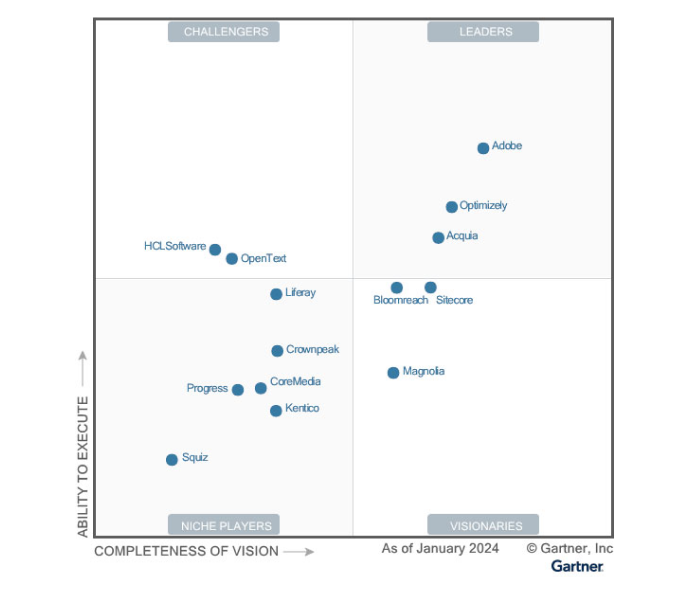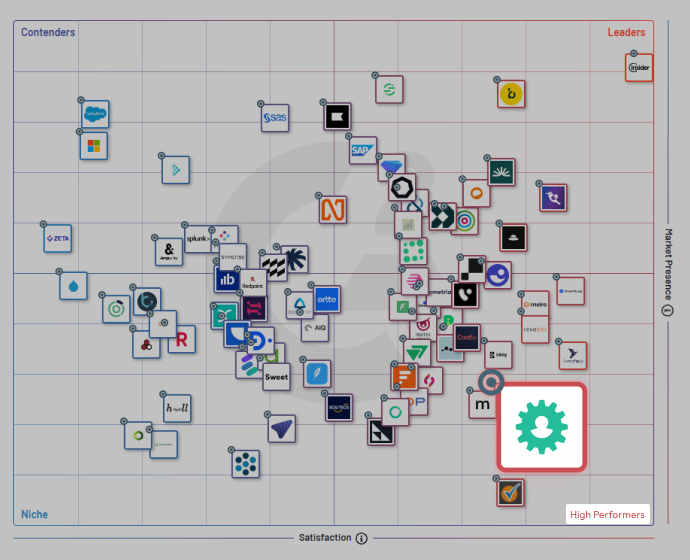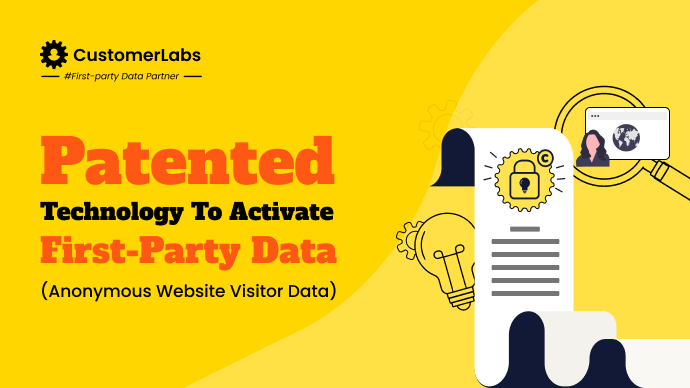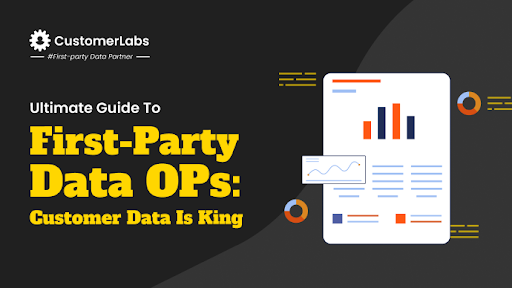According to CDP Institute, 63% of the retailers are using CDPs for personalized product recommendations. This shows that CDPs are essential for every business out there, which is looking to drive engagement through personalized experiences and efficient data use.
This guide will walk you through the 2024 list of the Gartner® Magic Quadrant™ for CDPs—released by Gartner, the leading global research and advisory firm. The report evaluates top CDPs based on their ability to execute and the completeness of their vision, helping businesses identify the right solutions to fit their marketing needs.
Understanding the strengths of each platform, from AI-powered insights to real-time customer profiling, is crucial to choosing the right tool for optimizing ad campaign performance. Explore how the CDP Magic Quadrant can guide you in selecting the best platform to elevate your data-driven marketing strategies.
Introduction to Gartner’s Magic Quadrant for Customer Data Platforms 2024
The Gartner Magic Quadrant for Customer Data Platforms (CDPs) is a critical resource for performance marketers, offering a clear evaluation of key players in the CDP market.
It helps identify platforms that provide data unification, audience segmentation, and cross-channel marketing solutions essential for high-performing campaigns.
The CDP Magic Quadrant is deemed to be a trusted resource for marketers, breaking down how well vendors perform and how forward-thinking they are, so it’s easier to find the right CDP to grow. But the Gartner’s 2024 CDP Magic Quadrant does not serve the complete purpose.
In the 2024 CDP Magic Quadrant, platforms are categorized into four groups:

- Leaders: These vendors, such as Salesforce and Tealium, consistently deliver comprehensive solutions and have a solid market presence. Their platforms integrate seamlessly with CRM systems.
- Challengers: These companies, like BlueConic, focus on specific strengths such as data privacy and simplified marketing workflows.
- Visionaries: With companies like Twilio investing in cutting-edge technologies, including real-time integrations and AI-driven capabilities, performance marketers can leverage these platforms for future-proofing their strategies.
- Niche Players: Vendors such as mParticle offer specialized solutions focused on vertical industries, often with features like data monitoring and quality assurance.
Similarly, G2 also has created its own magic quadrant as below:

Up next, we’ll dive deeper into the core capabilities of CDPs and why they matter for performance-driven marketing strategies.
Core Capabilities of Customer Data Platforms (CDPs)
Magic Quadrants give an overview of how vendors perform in a market, while Critical Capabilities take a closer look at the specific products and services they offer. While Magic Quadrants provide a broader comparison of vendors, Critical Capabilities focus more on evaluating the details of their offerings.
At the heart of every Customer Data Platform (CDP) lies its ability to integrate, unify, and activate customer data across various channels. These capabilities are essential for driving accurate targeting, personalization, and seamless customer journeys.
A well-equipped CDP, like CustomerLabs, not only connects with multiple platforms but also ensures that the data is actionable, unlocking higher returns on ad spend (ROAS) and better customer experiences.
Here are the core capabilities a top-rated CDP should offer:
- Integrates with CRMs, social media, and ad networks, enabling seamless data flow across systems for real-time targeting and campaign execution. You can see how CDPs also enable advanced features like Facebook Custom Audience Matching to boost campaign performance.
- Builds unified customer profiles by consolidating data from multiple touchpoints, essential for personalized marketing and improving audience engagement.
- Enables advanced segmentation and audience creation, allowing performance marketers to target specific user behaviors for better campaign performance with personalization to their end users and increase the ROAS.
- Audience activation without signal loss helps you train the ad algorithms with high-quality signal data. This helps increase your ROAS and overall ad campaign performance.
- Offers privacy and compliance tools, ensuring data handling aligns with global regulations like GDPR while maintaining user trust and data security.
- Provides robust analytics and reporting, giving insights into user actions and campaign performance to dynamically optimize marketing strategies. CustomerLabs CDP offers integration with GA4 (Google Analytics), MixPanel, LookerStudio, BigQuery, and others for detailed data analysis and reporting.
Now, let’s dive into the CDP market leaders and explore what makes them stand out for performance marketers.
Leaders in the CDP Magic Quadrant for 2024
The leaders in the CDP market dominate by offering powerful integrations, data unification, and advanced AI-driven features. These platforms are well-suited for performance marketers who need reliable, scalable solutions to optimize their campaigns.
The CDP Magic Quadrant for 2024 by Gartner though does not incorporate all the CDPs, it does include a few such as;
Salesforce:
Calls themselves as the world’s #1 AI CRM rather than a CDP. It offers deep integration with its CRM ecosystem, an extensive partner network, and AI-powered tools like Einstein to enhance campaign performance and personalization. Though it claims itself as a CDP, it is more of an extended CRM, rather than a CDP.
Tealium:
Known for its verticalized offering and strong partner ecosystem, Tealium remains market-neutral, allowing easy integration with any tool, making it flexible for diverse marketing needs. Mostly serves as an enterprise CDP. Does not help Small & Medium Businesses (SMBs) much.
Treasure Data:
Stands out with cross-CRM profile unification and a robust AI framework, offering predictive segmentation for smarter, more targeted marketing strategies. The pricing of Treasure Data is huge and its implementation is a headache for marketers.
Adobe:
Provides seamless integration with its suite of marketing tools, a cohesive interface, and a multi-layered partnership strategy that drives cross-platform campaign management. They claim it as a real-time CDP. The pricing system is customized, making it less transparent. Heavy pricing as heard from some of the users.
Some of these CDPs, as Gartner claims, are not actually the best choice for most of the SMBs (Small and Medium Businesses). Except a few like Tealium, TreasureData, others are not really worth it. Even these two are very pricey and make it unattractive for businesses, making the overall implementation of a CDP as ROI negative. This is what was spoken about by Rick Donkers on a video, and there was a response video that mentioned how a CDP implementation can be ROI positive.
Read more about the ONLY PATENTED CDP to activate first-party data (1p data including anonymous website visitors) across ad platforms such as Meta Ads, Google Ads, etc. With CustomerLabs CDP, you can activate your first-party data (1p data) seamlessly across ad platforms to witness the results never imaged.
In the G2 launched magic quadrant of CDP, CustomerLabs CDP stands in the high performers quadrant with better satisfaction from the customers. This shows that the Gartner Magic quadrant is to be observed with caution. So, do not decide just based on one magic quadrant but go through multiple sources to finally decide with one that suits your business the best.
Next, we’ll examine the challengers in the CDP market and how their specialized features can benefit performance marketers.
Challengers in the CDP Magic Quadrant for 2024
In the Challengers section of the CDP Magic Quadrant, platforms like BlueConic focus on balancing privacy and ease of use, which is crucial for performance marketers managing complex data landscapes.
- Privacy prioritization: BlueConic ensures compliance with global data privacy laws, making it easier for marketers to manage first-party data securely.
- Marketing team convenience: The platform is designed for non-technical users, allowing marketing teams to easily manage data and run campaigns without needing IT support.
- Predictive models: BlueConic’s predictive analytics tools help marketers identify key audience segments, optimizing targeting for better ad performance and ROAS.
Interestingly, all these benefits—privacy-first data handling, ease of use for non-technical teams, and advanced audience segmentation—are also available with CustomerLabs, a robust CDP that helps marketers and businesses in enhancing their marketing campaigns with high-quality 1p data (first-party data), ensuring marketers can achieve similar outcomes with confidence.
Next, we’ll explore the Visionaries in the CDP market and how their forward-thinking approaches can impact marketing strategies.
Visionaries in the CDP Magic Quadrant for 2024
The Visionaries in the CDP Magic Quadrant bring innovative solutions to the market, offering performance marketers advanced capabilities that can future-proof their campaigns.
These platforms emphasize cutting-edge technology and a forward-looking approach, ideal for marketers wanting to stay ahead of trends.
- Twilio Segment: Segment’s composable CDP offers flexibility with its real-time, zero-copy architecture, making data accessible instantly for faster campaign optimizations.
- ActionIQ: With a focus on modularized CDP components and real-time integrations, ActionIQ enables performance marketers to manage large-scale data warehouses and develop generative AI capabilities.
- Amperity: Leveraging AI and machine learning, Amperity excels in data matching and advanced segmentation, allowing marketers to create highly targeted, data-driven campaigns with proof-of-concept validation. Amperity has launched a Zero Copy Lakehouse CDP recently, giving a tough competition to the Composable CDPs. It also went ahead to say that Composable CDPs are dead!
- Oracle: Oracle’s extensible AI/ML framework is designed to provide deep insights into customer behavior, giving performance marketers the tools they need to refine their strategies and personalize campaigns effectively.
Up next, we’ll look at Niche Players in the CDP market and their specialized offerings for specific industries and use cases.
Niche Players in the CDP Magic Quadrant for 2024
The Niche Players in the CDP Magic Quadrant focus on specialized solutions, catering to specific industries and unique use cases. These platforms are ideal for performance marketers who need tailored capabilities to address distinct challenges.
Here’s a detailed information about the Niche Players
- Zeta Global: Known for its calendaring and workflow tools, Zeta Global is favored by marketing and ad agencies for organizing campaigns and enhancing operational efficiency.
- Redpoint Global: Offers vertical toolkits and robust data ingestion, helping marketers unify customer data across multiple sources for consistent insights.
- Zeotap: Provides flexible customer profile unification with a focus on the European market, using add-on modules to meet the unique data privacy needs in the region.
- mParticle: Excels in journey analytics and data quality assurance, allowing marketers to monitor data flow and track customer journeys with precision across touchpoints.
- Leadspace: Ideal for B2B marketers, it focuses on target personas and account verification, ensuring accurate data for effective persona-based marketing strategies. More than a CDP, it can be termed as an ABM tool with extended features that helps the sales teams. Therefore, including Leadspace in the category of CDP is not really right according to the CDP institute.
- Blueshift: Specializes in serving retail and media sectors with features like a recommendation engine and multi-channel marketing tools to improve personalization. Blueshift can be termed more of an intelligent customer engagement tool, or a CEP (Customer Engagement Platform) and not a CDP.
- SAP: Integrates with ERP systems, providing CIAM (Customer Identity and Access Management) solutions, along with a large partner network to support advanced marketing workflows. SAP is not ideally a CDP, and Gartner must look into why it even included SAP in that category.
- Dun & Bradstreet: Focuses on account-level data aggregation and quick activation, offering short implementation times and high market visibility, making it useful for account-based marketing. Therefore, it actually cannot be called as a CDP.
Next, we’ll explore the challenges and future prospects for CDPs and what performance marketers should consider when adopting these platforms.
Challenges and Future Prospects for CDPs
As Customer Data Platforms (CDPs) evolve, performance marketers encounter both challenges and opportunities. Keeping up with market changes and new technologies is essential for staying competitive and running campaigns efficiently.
- Market complexity and rapid technological advancements: The CDP market is constantly shifting, with new technologies like AI and machine learning being integrated. Marketers need to stay updated to ensure they’re leveraging the most effective tools.
- Issues with market perception and vendor rebranding: Many vendors undergo rebranding or offer overlapping features, creating confusion in the market. Performance marketers must carefully evaluate platforms to avoid redundant solutions.
- Importance of proving ROI: Demonstrating the value of CDP implementation is crucial. Marketers need clear use cases and measurable success metrics to justify the investment and optimize future campaigns. For instance, implementing a CDP itself must not take 6 months! Ideally, a CDP implementation must take not more than the time you take to create a gmail account.
- Implementation challenges: Integrating CDPs with existing tech stacks can be difficult, especially with fragmented data systems.
Focusing through these challenges requires a reliable partner to simplify CDP implementation and integration. CustomerLabs CDP helps streamline integration, minimizing these hurdles while enhancing data unification and reporting capabilities. The overall implementation is ROI positive, with minimal setup time, and easy data integration!
Want a Powerful CDP to reinforce your MarTech Stack? Get in touch with our 1P data experts to find the right solution for your business for FREE – Schedule a Demo
Conclusion
As the CDP Magic Quadrant illustrates, the market for Customer Data Platforms (CDPs) is evolving rapidly, driven by the need for more integrated and intelligent data solutions. CDPs have become essential for unifying customer data, breaking down silos, and enabling real-time personalized experiences to the users. Performance marketers, in particular, rely heavily on these platforms to ensure precise audience targeting and optimized ad spend.
When selecting a CDP, it’s vital to align the platform’s features with your specific business needs. Whether it’s seamless integration with your existing tools or the ability to collect and activate first-party data, finding the right solution is key to driving the required results.
Looking forward, CDPs are poised to play a significant role in the adoption of generative AI and advanced data management strategies. AI-driven insights, paired with data from CDPs, will empower marketers to predict user behaviors and improve campaign outcomes across all channels.
For marketers seeking a no-code approach to data management, CustomerLabs CDP offers tools to streamline data collection, unification, audience segmentation, and activation across marketing platforms. With built-in integrations for platforms like Google Analytics, Google Ads, and Meta Ads, among others, it enables efficient activation of first-party data, helping improve audience targeting and campaign performance across channels. This makes it easier for marketing teams to manage data-driven strategies without needing extensive technical expertise.
Check the potential of seamless, data-driven marketing with CustomerLabs CDP to leverage 1P data Ops. Book a demo






